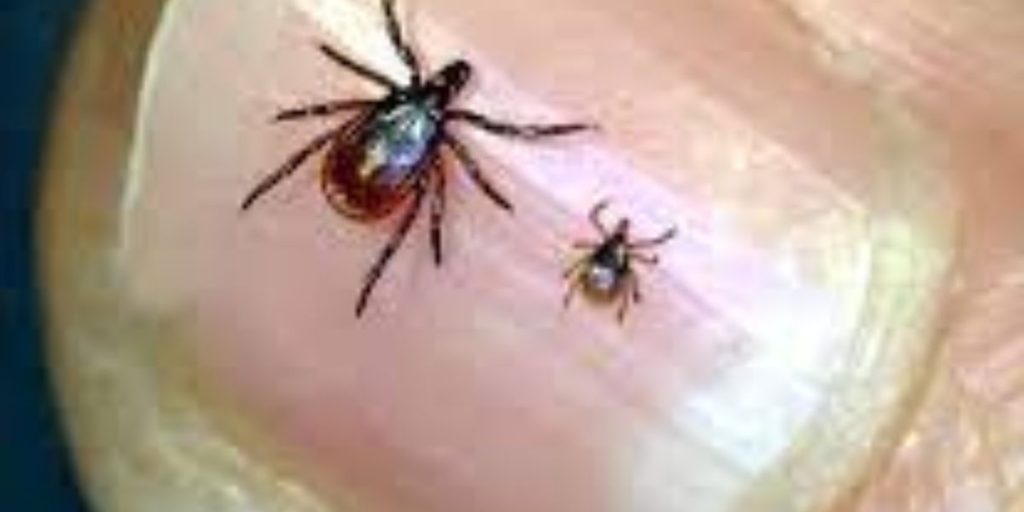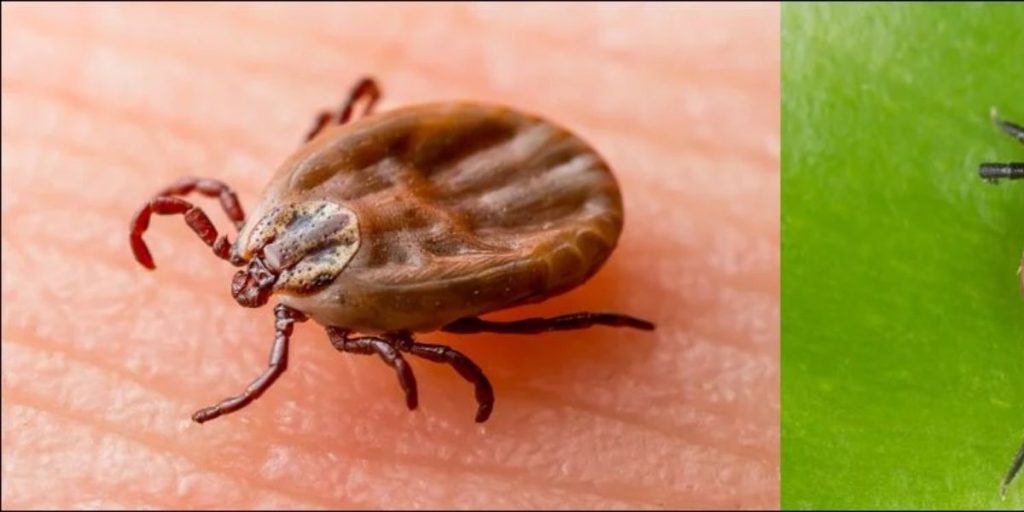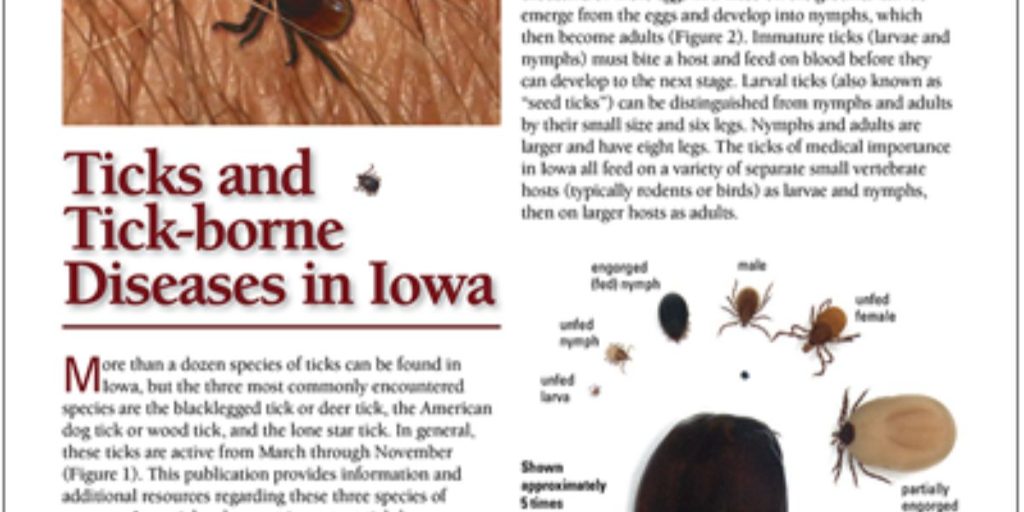Iowa’s beautiful grasslands and interspersed woodlands make it an ideal area to spend the summer outdoors. But what about the ticks in Iowa? Ticks live all across the world, and Iowa is no exception. There are four types of ticks found in Iowa: the wood tick, the lone star tick, the deer tick, and the brown dog tick. Of these four ticks, only one carries Lyme disease and lives primarily indoors.
Here we’ll learn more about Iowa’s four tick types. We’ll learn how to identify each species, where to find them, and what diseases and viruses they transmit. Then we’ll discuss tick prevention and what to do if you detect a tick on yourself or your canine companion.
Wood tick (American Dog Tick)
Wood ticks are most commonly seen on dogs, although they will feed on human blood if given the opportunity. Females have red-brown bodies with mottled tan scuta (shoulder shields), whereas males have red-brown legs with mottled tan bodies.

These ticks are more likely to be found in fields than in woods. They do not transmit Lyme disease, but they can spread Rocky Mountain spotted fever and tularemia. Tularemia transmission to dogs can cause canine tick paralysis, requiring rapid medical attention. The most active season for American dog ticks is in the spring and early summer.
Lone Star Tick
Lone star ticks in Iowa are lighter-colored and smaller than wood ticks. Female lone star ticks are completely red-brown, with a single tan patch in the center of the back. Males do not have this ‘lone star.’ Instead, they have faint tan mottling. Males and females have spherical bodies with huge, clearly visible mouthparts.
Like the wood tick, the lone star tick does not transmit Lyme disease. Instead, these ticks in Iowa are known to spread ehrlichiosis, which is treatable with medication. These ticks are not host-specific and will feed on any organism that crosses their path. Lone star ticks are believed to ‘search’ for hosts by following their carbon dioxide trails.
Learn More: These 6 Dangerous Animals Are Invading Florida
Deer Tick (Black-Legged Tick)
The deer tick is among the most dangerous parasites in Iowa. Deer ticks are easy to identify since they are the only ticks in Iowa that have black legs. Their black legs match their mahogany brown body, which has a black scutum and mouthparts. These ticks hunt by ‘questing,’ or waiting on the edges of shrubs or tall grass with their front legs stretched for a host to pass by.
Deer ticks in Iowa are the only ones capable of transmitting Lyme disease. Lyme disease is a devastating infection characterized by a bullseye-shaped rash that emerges immediately following a tick bite. Black-legged ticks prefer to feed on white-tailed deer, although they can also prey on humans, dogs, raccoons, foxes, mice, rats, and other animals.

Brown Dog Tick
The brown dog tick is the only tick in Iowa that lives indoors. That’s right, ticks may be found anywhere, including indoors. The good news (relatively) is that brown dog ticks feed nearly entirely on dogs, rarely latching onto humans or cats. These ticks have dark brown, almost rectangular bodies and brown legs.
Brown dog ticks live in areas where dogs are present. They can be found at kennels, veterinary offices, and private houses with dogs. They prefer dog beds, crates, and other dog-friendly environments. Unlike deer ticks, brown dog ticks do not spread Lyme disease.
When is Tick Season in Iowa?
Ticks enjoy warm temperatures and sunshine. Ticks are most common in Iowa throughout the spring and summer months, which last from March to November. Ticks hibernate in the winter, laying dormant under snow or in forest leaf litter. Baby ticks hatch at the start of spring and spend the next few months hunting for hosts before molting into their nymph and adult forms.
Also, read:
- Explore the Ghost Town on the Shores of California’s Salton Sea
- 3 Worst Tornadoes of All Time That Hit Texas
- The US State with 2nd Highest Abortion Rate
Do Ticks in Iowa Carry Lyme Disease?

Unfortunately, there is one variety of tick in Iowa that spreads Lyme disease. The principal vector of Lyme disease in North America is the deer tick, sometimes known as the black-legged tick. Lyme disease can manifest in a variety of ways and is notoriously difficult to diagnose since it resembles the symptoms of numerous other disorders. Early diagnosis is critical for a good prognosis.
Learn More: Retirement in Virginia vs Retirement in Florida
How To Avoid Ticks In Iowa?
To avoid ticks in Iowa, wear light-colored, long-sleeved pants and shirts when hiking or enjoying the outdoors. Avoid moving through heavy foliage, and always check yourself and your dog for ticks after any outdoor activity.
Read More: 8 States in the US with the Best Air Quality
How To Remove Ticks In Iowa?
Don’t panic if you find a tick embedded in your flesh or that of a friend, loved one, or dog. The tick needs to be removed as quickly as possible. Using tweezers, grip the tick as near to the skin as possible before gently pulling it out. After removing the tick, crush it and dispose of it, then treat the wound with disinfectant. In the next weeks, keep a close eye on the bitten region for any signs of rash or illness.